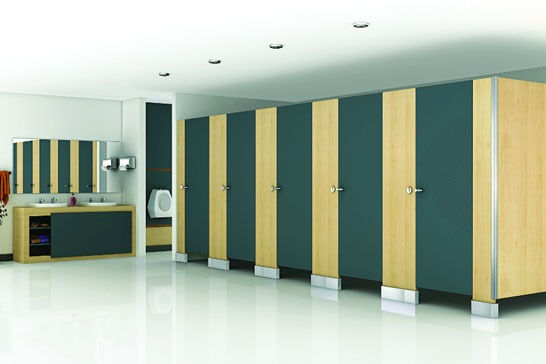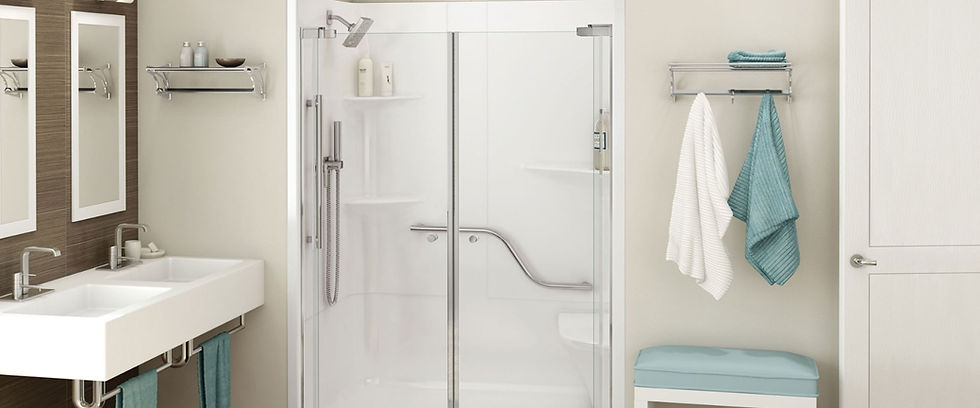A Comprehensive Guide to Toilet Cubicles
- Tanu Adhikari

- Nov 22, 2024
- 3 min read
Updated: Jul 9
Toilet cubicles are the unsung heroes of modern public and private restrooms. These versatile, durable, and aesthetically adaptable partitions play a critical role in ensuring privacy, hygiene, and efficient space management. From bustling shopping malls and corporate offices to educational institutions and luxury hotels, toilet cubicles are essential fixtures that combine form and function.
In this blog, we’ll dive deeper into the world of Toilet Cubicle Manufacturers—covering their history, technological innovations, global trends, and maintenance tips—while exploring how they can redefine restroom experiences.

The Evolution of Toilet Cubicles
Toilet cubicles have come a long way from simple wooden partitions to today’s sophisticated and modular designs. The evolution includes:
Early Designs: Basic wooden or brick partitions were once the norm in shared restrooms. They provided minimal privacy and were difficult to maintain.
Industrial Revolution Impact: The rise of industrial materials like metal and early laminates allowed for more durable and hygienic solutions.
Modern Innovations: With advancements in technology, toilet cubicles now feature modular designs, eco-friendly materials, and smart technology for enhanced user convenience and hygiene.
Modern Materials and Innovations
High-Tech Materials
Antimicrobial Coatings Materials coated with antimicrobial substances reduce the spread of germs and are ideal for hospitals, schools, and high-traffic areas.
Self-Cleaning SurfacesAdvanced materials like nanotechnology-coated panels actively repel dirt and bacteria, reducing the need for frequent cleaning.
Recycled MaterialsRecycled aluminium and wood composites are gaining traction as sustainable and cost-effective solutions.
Technology Integration in Toilet Cubicles
Smart SensorsOccupancy indicators, touchless locking systems, and IoT-enabled devices help improve user convenience.
Energy EfficiencyLED lighting systems integrated into cubicles enhance visibility while conserving energy.
Data AnalyticsSome high-tech cubicles monitor usage patterns and provide data to facility managers for optimizing maintenance and cleaning schedules.
Global Trends in Toilet Cubicle Design
The design of toilet cubicles varies significantly based on cultural and functional needs. Some global trends include:
Eco-Friendly FocusScandinavian designs emphasize sustainability, with cubicles made of natural or recycled materials like bamboo or reclaimed wood.
Open Yet Private SpacesIn Japan, cubicles incorporate soundproofing and sleek, minimalist aesthetics to enhance privacy and comfort.
Vibrant Colors and Artful PatternsIn countries like India, bright hues and decorative patterns bring life to public restrooms, making them more inviting.
Luxury Additions Middle Eastern designs often feature ornate details, high-end materials like marble, and additional amenities such as vanity spaces within cubicles.
Customizing Toilet Cubicles for Various Needs
Toilet cubicles can be tailored to meet diverse requirements, ensuring functionality, inclusivity, and aesthetic appeal.
For High-Traffic Areas
Use durable materials like compact laminate or stainless steel.
Include features like vandal-resistant locks and panels.
For Inclusive Facilities
Create accessible cubicles with wider doors, grab bars, and low-height sinks.
Ensure compliance with the Americans with Disabilities Act (ADA) or local regulations.
For Premium Restrooms
Opt for materials like frosted glass or solid-surface panels.
Incorporate soft-close doors and luxurious finishes.
Maintenance Tips for Toilet Cubicles
Toilet cubicles are low-maintenance but require regular care to ensure longevity and hygiene:
Regular Cleaning
Use mild, non-abrasive cleaning agents to prevent damage to surfaces.
Focus on hinges, locks, and joints to avoid rust or wear.
Inspect for Damage
Check for scratches, dents, or loose fittings.
Replace damaged parts promptly to maintain functionality.
Prevent Water Damage
In humid environments, ensure proper ventilation to avoid warping or swelling of panels.
Use waterproof materials where necessary
Sanitization
Disinfect high-touch areas, such as locks, handles, and door edges, to minimize germ spread.
Future of Toilet Cubicles
The future of toilet cubicles lies in embracing technology and sustainability:
AI-Powered CubiclesAdvanced cubicles will feature AI-based systems that detect cleaning needs, usage patterns, and even potential repairs.
Virtual Layout CustomizationAugmented reality (AR) tools will allow architects and facility managers to visualize and customize cubicle layouts before installation.
Zero-waste manufacturing Manufacturers are moving towards zero-waste processes, utilizing every scrap of material to create eco-friendly cubicles.
Choosing the Right Manufacturer
When investing in toilet cubicles, choosing a reliable manufacturer is critical. Look for a company that offers:
Customizable Designs: Tailored solutions to fit your specific needs.
Quality Assurance: Durable materials with warranties.
Eco-Friendly Options: Sustainable practices and materials.
Professional Installation: Expert teams for smooth and efficient installation.
Customer Support: After-sales services and easy access to replacement parts.
Conclusion: Why Toilet Cubicles Matter
Toilet cubicles are more than partitions—they are a reflection of your facility’s commitment to user comfort, hygiene, and design. Whether you’re managing a commercial space, a school, or a luxury venue, the right cubicles enhance user experience, boost restroom efficiency, and add a touch of sophistication.
Invest in quality toilet cubicles today to redefine your restroom spaces and leave a lasting impression on users. Choose durability, design, and sustainability—because every detail matters.






Comments